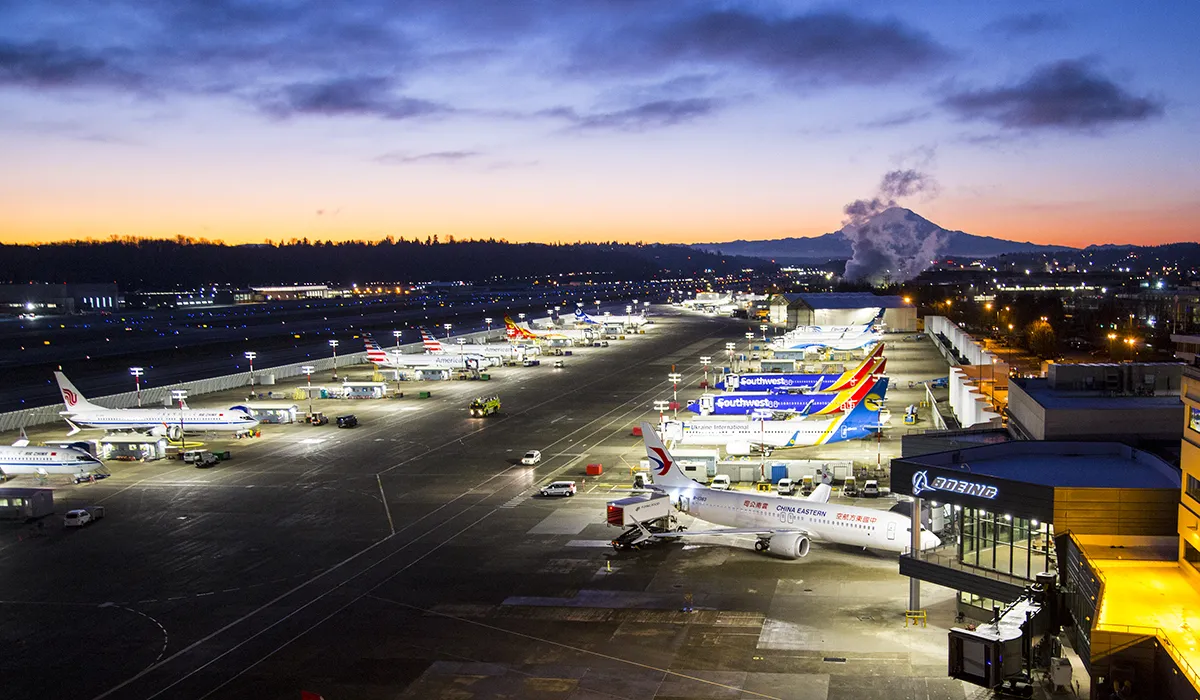
Boeing Forecasts 43,000 Aircraft By 2042
Jun 18, 2023

Boeing has projected a significant demand for new aircraft over the next two decades, estimating the need for approximately 43,000 planes by 2042. This forecast is driven by various factors, including the anticipated growth in global air travel, the expansion of airline fleets, and the need for modern, fuel-efficient aircraft to replace older models. The report highlights a strong recovery in the aviation sector following recent downturns, emphasizing the importance of sustainable practices and technological advancements in the industry. Boeing's outlook reflects a commitment to innovation and meeting the evolving needs of airlines worldwide.
Boeing's recent forecast indicates a significant growth in the global aviation industry, projecting that the world will require approximately "43,000 new aircraft" by the year "2042". This report highlights the increasing demand for air travel and the expansion of airline fleets across the globe. The data presented in this article underscores the evolving landscape of the aviation sector, driven by factors such as rising passenger numbers, economic growth, and technological advancements.
Key Drivers of Aircraft Demand
Several factors contribute to the forecasted demand for new aircraft. Understanding these drivers is essential for stakeholders in the aviation industry, including airlines, manufacturers, and investors.
- Population Growth: The world population is expected to surpass "9 billion" by 2042, leading to an increased demand for air travel as more people seek international and domestic travel opportunities.
- Economic Development: Emerging economies are experiencing rapid growth, with a burgeoning middle class that has greater disposable income to spend on travel. This economic development is a significant driver of increased air traffic.
- Technological Advancements: Innovations in aircraft design, fuel efficiency, and safety features are making air travel more appealing to consumers and airlines alike. Newer aircraft models are designed to be more environmentally friendly and cost-effective.
- Urbanization: As more people move to urban areas, the demand for quick and efficient transportation options increases. Air travel provides a solution to this need, prompting airlines to expand their fleets.
Aircraft Types in Demand
The forecast from Boeing indicates that the demand for new aircraft will span various categories. The following table breaks down the types of aircraft expected to be in demand by 2042:
| Aircraft Type | Projected Deliveries | Percentage of Total Demand |
|---|---|---|
| Single-Aisle Aircraft | 32,000 | 74% |
| Wide-Body Aircraft | 10,000 | 23% |
| Freighters | 1,000 | 3% |
This data clearly illustrates that the majority of demand will be for "single-aisle aircraft", which are typically used for short to medium-haul flights. Airlines are increasingly favoring these aircraft due to their operational efficiency and versatility.
Regional Insights
Diving deeper into regional trends, Boeing's forecast also highlights the "regional distribution" of new aircraft demand. The demand varies significantly across different parts of the world:
- Asia-Pacific: As the fastest-growing aviation market, the Asia-Pacific region is expected to account for nearly "40%" of total aircraft deliveries, driven by increasing air travel demand in countries like China and India.
- North America: North America remains a robust market with a projected demand for around "20%" of new aircraft deliveries, supported by established carriers expanding their fleets.
- Europe: Europe is anticipated to require about "15%" of new aircraft, with a focus on modernizing aging fleets and enhancing sustainability.
- Latin America and Africa: These regions are projected to see smaller shares of demand, but still represent significant opportunities for growth, especially as their economies evolve.
Environmental Considerations
As the aviation industry prepares for this growth, environmental considerations are taking center stage. The increasing focus on sustainability is prompting manufacturers and airlines to invest in more "fuel-efficient" and "eco-friendly" aircraft designs. Boeing is committed to developing technologies that reduce emissions and noise, ensuring that the expansion of air travel aligns with global sustainability goals.
Conclusion
Boeing's forecast of "43,000 new aircraft" by 2042 paints a promising picture for the aviation industry. With the combination of population growth, economic development, and technological advancements, the demand for air travel is set to soar. Stakeholders must stay informed about these trends and adapt their strategies to capitalize on the opportunities presented by this expanding market. As the industry evolves, focusing on sustainability will be crucial for long-term success, ensuring that air travel remains a viable and responsible option for future generations.
Related Articles

Explore Thailand: The Best Islands to Visit for Paradise, Adventure, and Relaxation

The Ultimate Guide to the Best Islands in Thailand for Your Next Getaway

Do babies need passports? How to get a passport for a newborn

How to get a U.S. passport fast: here’s how to expedite the process

What is Mobile Passport Control: 5 reasons why you should use it

SENTRI vs. Global Entry: A detailed guide

Do you need a passport to go to the Bahamas? Let’s find out

Do you need a passport to go to Mexico? A detailed guide

Do you need a passport to go to Canada? We got the answer

Do You Need a Passport for a Cruise: An Essential Travel Guide

Booster Seat Requirements: All the Rules to Follow in Your Rental Car

What Are the World’s Most Powerful Passports, and How Does Yours Rank?

How to Take a Passport Photo at Home: A Helpful Guide

You've got to have heart! Southwest's new livery

Your opinion: Should water be free on low cost carriers?

Young women bolder than guys as solo travellers
